One year after inaugurating its first branch—the Aranya Art Center North, Aranya Art Center will officially open the Aranya Art Center Guangzhou at CTG·Aranya·Jiulonghu on November 23, 2025. As its first branch in a different city, the new venue marks a significant milestone, establishing Aranya Art Center's presence across both northern and southern China.
With the expansion of its network of venues, Aranya Art Center’s programming will evolve from a primary focus on contemporary art to embrace a broader spectrum of contemporary visual culture. It aims to become a platform that brings together diverse disciplines and media, including art, architecture, design, music, and film.
— Damien Zhang
Director of Aranya Art Center
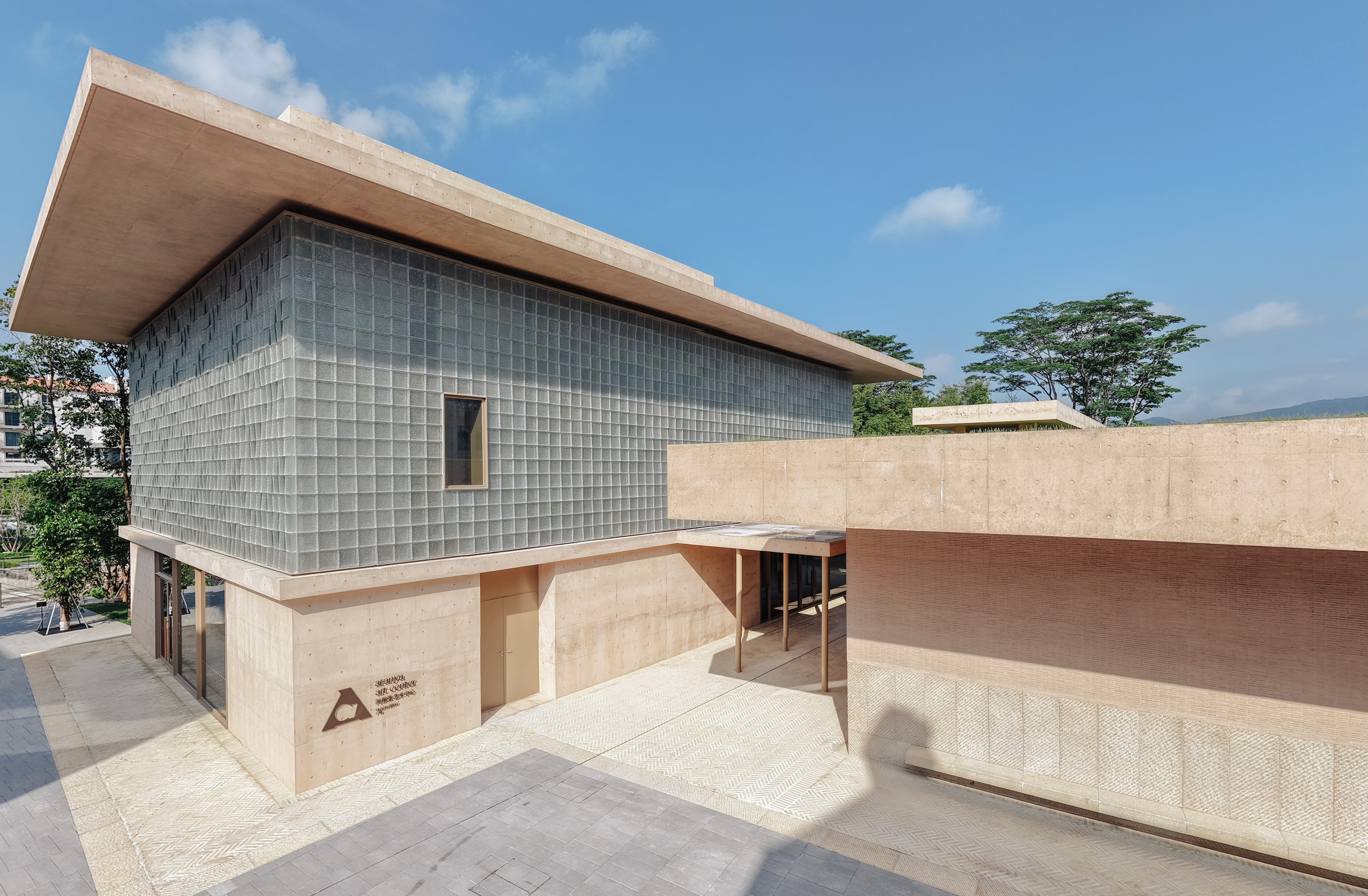
Aranya Art Center Guangzhou was designed by Chinese architect Dong Gong. Situated on the riverside within the CTG·Aranya·Jiulonghu community, the museum covers an area of 6166.74 square meters. It is the latest collaboration between Vector Architects and Aranya, envisioned as a hub for art exhibitions and cultural activities for the local community.
The building links five galleries around preserved banyan trees through alleys, gardens, plazas, and covered walkways.
An avenue stretching 50 meters in length, shaded by 25 mature banyan trees and adjacent groves, combined with the undulating micro-topography, reflects the genius loci of the site.
At its two ends, the Pavilion and Main Hall serve as outdoor and indoor anchors, extending the site’s natural sequence. Three smaller galleries are interwoven with old trees and terrain through ground with elevation differences. Walkways, terraces, and overhanging eaves guide visitors through a serene, layered garden-like environment.
About Vector Architects
Vector Architects was founded in Beijing in 2008. Over the past 17 years of practice, the studio has consistently engaged with complex and diverse design challenges, with particular focus on “site,” “light,” and “construction.”
The architects believe no building can exist apart from its “site”—it is a medium of connection and expression. Light, in their view, provides not only the visual dimension of “seeing,” but also a bodily sense of “immersion.” Ultimately, architecture is the art of “construction”. Vector Architects embrace a “working with the builders” approach, seeking to learn directly from local workers’ on-site craftsmanship, while constantly adjusting beyond the limitations of paper-based design.
The inaugural program at Aranya Art Center Guangzhou will feature the first solo exhibition in Asia of Wiebke Siem, one of the most significant contemporary artists from Germany. Siem was awarded the prestigious Goslarer Kaiserring in 2014, joining the ranks of previous laureates such as Joseph Beuys, Cindy Sherman, Ólafur Elíasson, and Barbara Kruger.
In parallel, the museum’s Pavilion space will present a sculpture by the renowned Japanese-American artist Isamu Noguchi.

The first solo exhibition in Asia of Wiebke Siem brings together nearly one hundred works across such mediums as sculpture, installation, and paper, spanning various phases of the artist’s multi-decade career.
With sculpture at the core of her practice, Wiebke Siem extracts everyday objects from their original contexts while warping their form and meaning. Since the 1980s, she has been using fashion as a point of entry, transforming clothing into unwearable sculptures. Hand-sewn dresses, coats, and hats hang suspended without wearers, becoming the outer garments of cultural gender constructs. She has also been reconstructing traditional 18th and 19th century furniture from the German countryside, painstakingly restoring their structure and details while intentionally diminishing their practical function, stripping them from reality to become fixed cultural heirlooms imbued with the collective memory of modern Germany’s national narrative.
Siem’s focus is not limited to objects themselves but is directed at the symbiotic relationships between objects and people. In her meticulously-designed home scenes, life has been quietly dismantled and reconstituted, with objects and bodies permeating each other. The furniture grows limbs, while the kitchen implements and home spaces are silent and static as a stage backdrop, implying regimented rehearsal. The “figures” within are silent, unbalanced, dislocated, but lifelike, awakening the viewer’s alertness and isolation from once familiar surroundings, thus transforming everyday life into a field revealing the structures of power. In this way, the artist emphasizes that the body is a tool shaped by cultural systems, revealing the reality that everyday labors and gender divisions have long been shaped and maintained by social order.
This exhibition is organized by Damien Zhang, Director of the Aranya Art Center, in collaboration with Assistant Curator Gao Liangjiao, and Exhibition Coordinator Zhao Da.
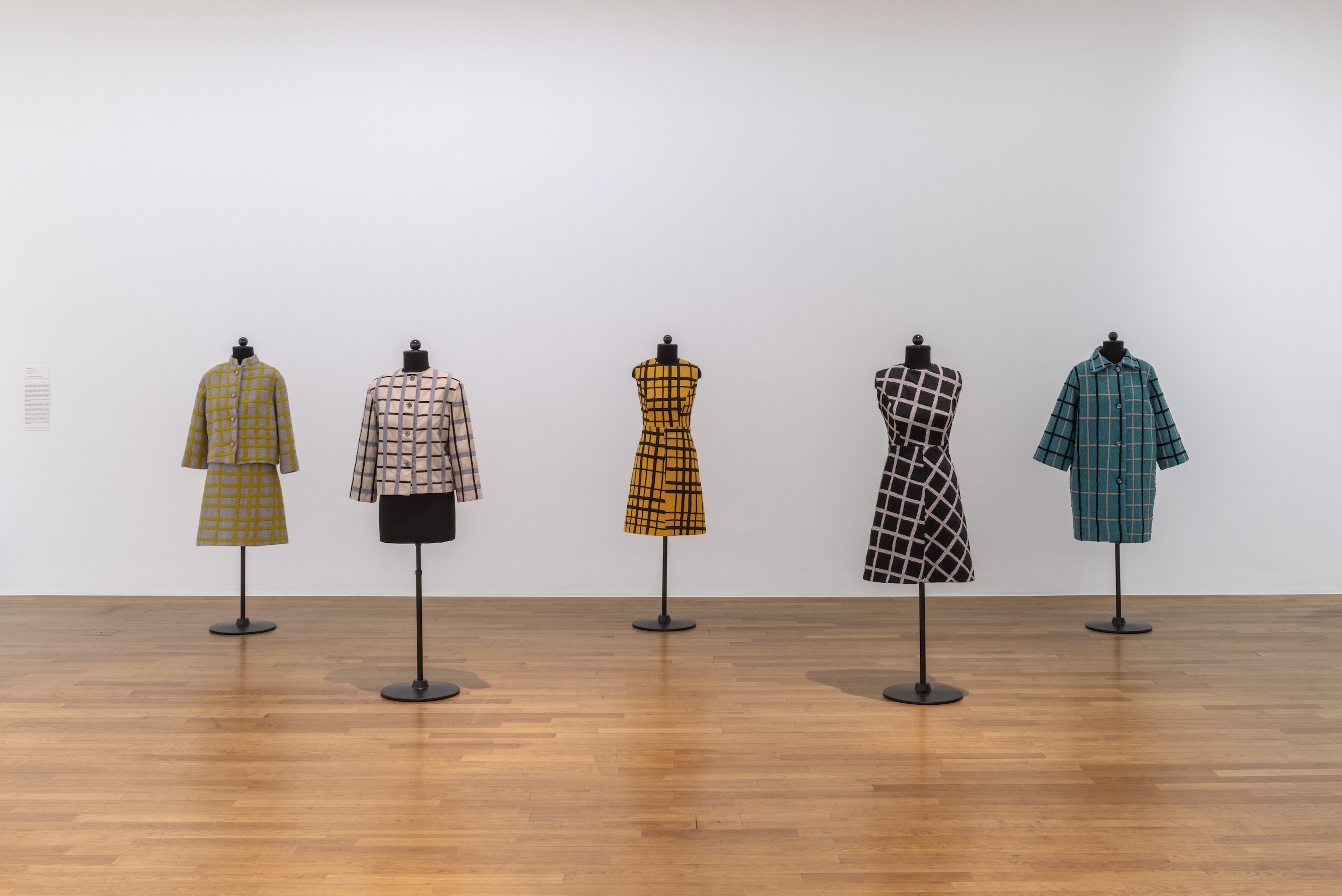
Wiebke Siem
5 dresses
1984/1985
Fabric
Dimensions variable
Photo David Ertl
Courtesy of the artist
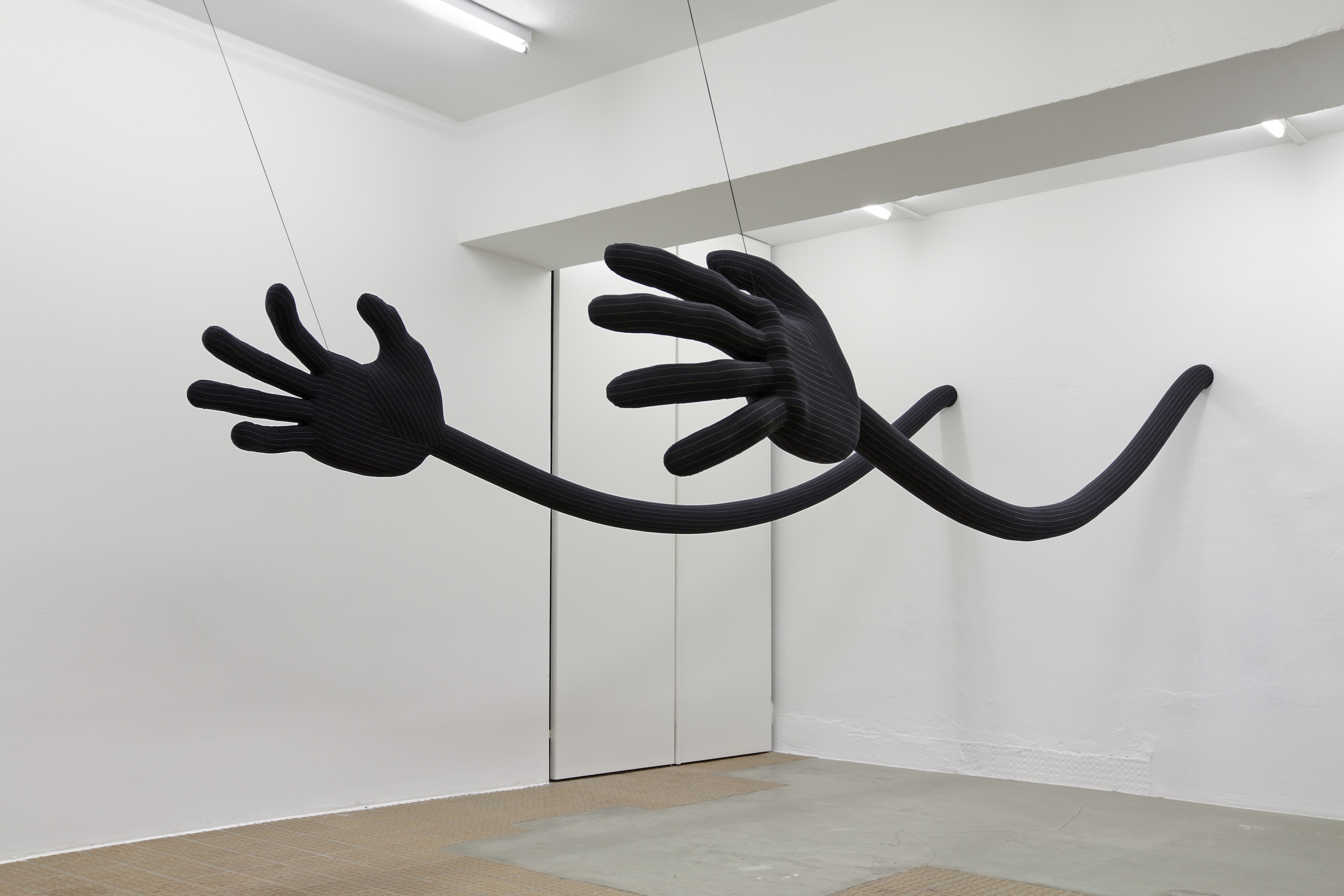
Wiebke Siem
Untitled
2007Foam rubber, woolen fabric
2 parts, each 54 × 410 × 23 cm
Collection of Karin Sander and Martin Lauffer, Berlin
Photo Hans-Georg Gaul
Courtesy of the artist
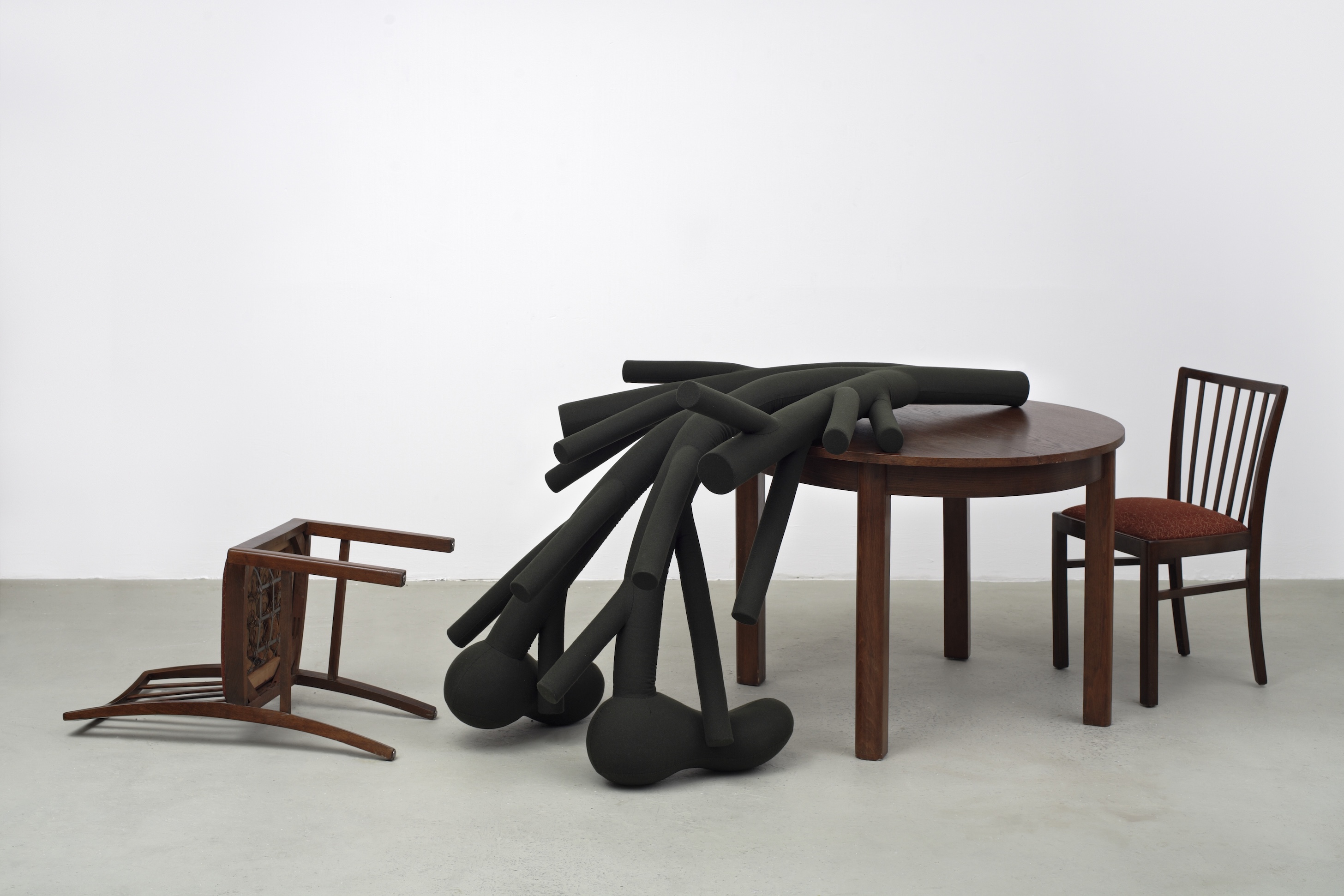
Wiebke Siem
The Wicked Colour
2007
Old table, two chairs, foam rubber, polystyrene, woolen fabric
Dimensions variable, figure: 205 × 116 × 45 cm
Photo Hans-Georg Gaul
Courtesy of the artist
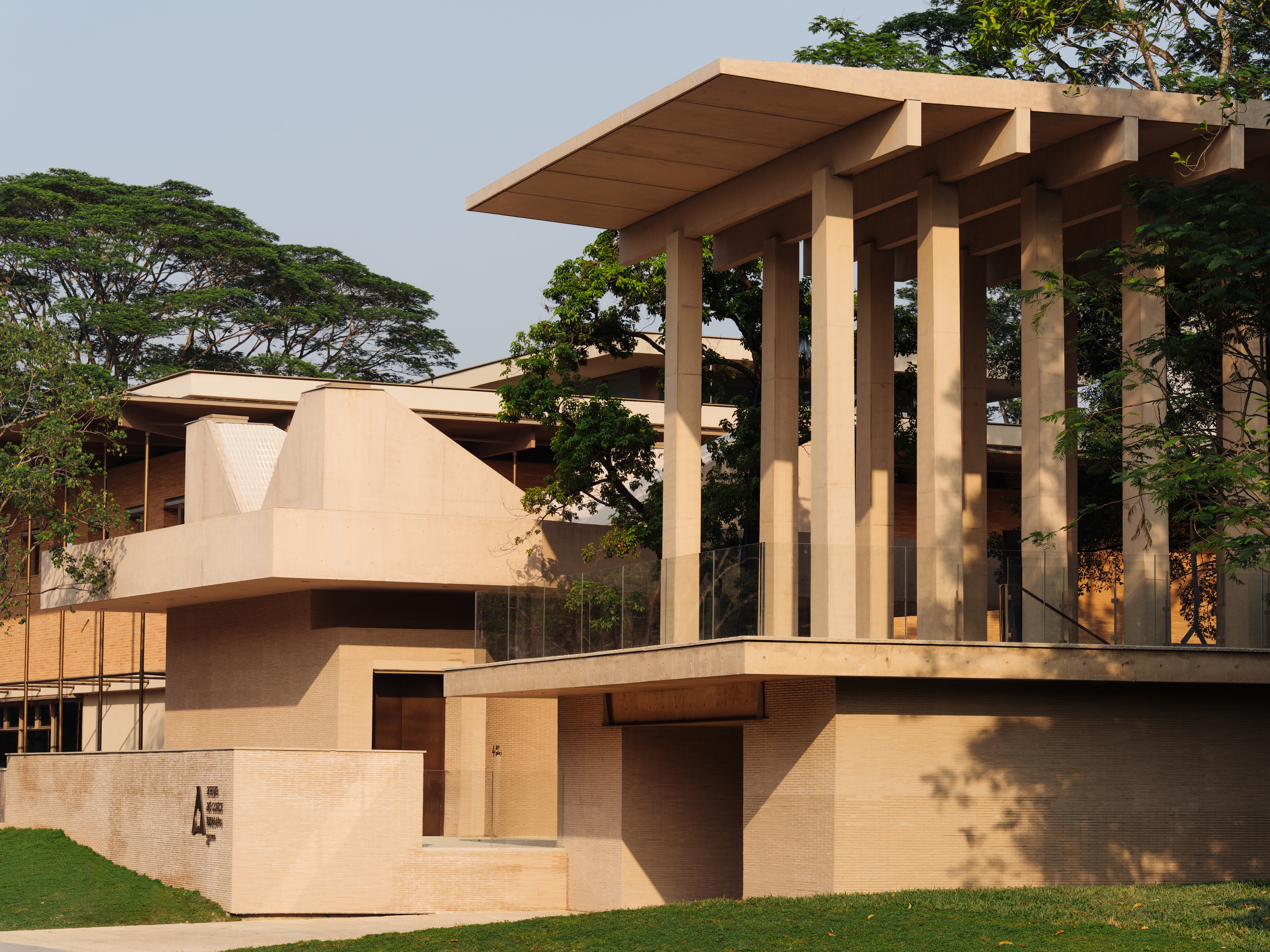
Located at the end of the tree-lined boulevard, the semi-open outdoor Pavilion connects the museum’s interior and exterior architecture, drawing the gaze of visitors from both the street and the garden. It will serve as an ongoing platform for the display of public art.
For its debut, the Pavilion will present Isamu Noguchi’s sculpture Giacometti’s Shadow (1982–83).
Recognized as one of the most influential artists of the twentieth century, Isamu Noguchi, in his later years, played between the traditional Japanese paper crafts and the techniques of industrial metalworking to create a series of galvanized steel sculptures, of which the work on view is one. Giacometti’s Shadow offers an abstract response to the iconic elongated figures in the sculptures of Swiss artist Alberto Giacometti. Through the tensions between the natural and the manmade, the light and the heavy, the soft and the hard, it reveals Noguchi’s unique artistic vision that bridges East and West.

Isamu Noguchi
Giacometti’s Shadow
1982–83
Hot-dipped galvanized steel
197.5 x 41.9 x 43.2 cm
Courtesy of White Cube;
©Isamu Noguchi Foundation and Garden Museum
Wiebke Siem
Wiebke Siem was born in 1954 in Kiel, Germany. She lives and works in Berlin. She has been awarded the prestigious Goslar Kaiserring prize as one of the “most innovative and original artists of her time”. Siem studied sculpture from 1979 to 1984 at Hochschule für Bildende Künste in Hamburg. She was a visiting professor and professor for Sculpture at Hochschule für Bildende Künste in Hamburg between 2000 and 2008. In 1999, Siem received a Sculpture Fellowship from the Henry Moore Foundation for a residency in Bristol, Great Britain and a grant from the Senate Department for Culture, Berlin, for a Residency at Delfina Studio Trust, London 2001, among other awards.
Recent solo exhibitions include: Kunstmuseum Luzern, Lucerne, Switzerland (2025); Kunstmuseum Bonn, Bonn, Germany (2023); Museum der Moderne Salzburg, Salzburg, Austria (2022/2023); Kunstmuseum Den Haag, The Hague, the Netherlands (2022), among others. Her work is included in several significant international collections, including Neues Museum Nürnberg, Lenbachhaus, Munich, Kunstmuseum Den Haag, Museum der Moderne Salzburg and the Centre national des arts plastiques (Cnap), France, among others.
Isamu Noguchi
Isamu Noguchi (1904–1988) was one of the twentieth century’s most influential sculptors, whose interdisciplinary practice encompassed sculpture, public works, gardens, furniture, lighting, ceramics, and set design. Working across cultures and continents, he developed a distinctive aesthetic that synthesized Eastern and Western artistic traditions, establishing new possibilities for sculpture’s role in public and private spaces.
Born in 1904 in Los Angeles to a Japanese father and an American mother, Noguchi’s early years were marked by upheaval and loneliness. Straddling continents and cultures and negotiating the perceived dichotomies of ‘East’ and ‘West,’ was, he later recognized, the defining characteristic of his artistic evolution. During the 1920s he lived in New York working as an academic sculptor, but despite early success soon changed direction, leaving for Paris in 1927 where he became the first and only assistant of Constantin Brancusi. Returning to New York in 1929, Noguchi met architect, inventor and social revolutionary R. Buckminster Fuller, who would remain a lifelong friend and mentor, and the dancer and choreographer Martha Graham, with whom he would collaborate on set designs for the next 40 years.
In 1985 he founded the Isamu Noguchi Garden Museum (now The Noguchi Museum) across the street from his studio in Long Island City, NY. It was the first, and is still the only, museum in the United States created by an artist to show their own work. The following year, Noguchi represented the United States at the Venice Biennale, the first time the U.S. Pavilion had been devoted to a single artist.
We look forward to seeing you in Guangzhou.
Team of Aranya Art Center
Gao Liangjiao
Assistant Curator
Zhao Da
Operations Manager / Exhibition Coordinator (Guangzhou)
Jiang Ruoyu
Assistant Curator
Zhang Ziwei,Zhao Ruizhi
Designer
Li Fangwen
Curatorial Assistant
Zhong Zihao
Visitor Experience (Guangzhou)
Cyril Kuizhen Rao
Curatorial and Research Fellow
Zhang Zhitao
Operations Manager (Guangzhou)
Wu Yiyang
Associate Curator
Sun Rongkun
Security Manager (Guangzhou)
Damien Zhang
Director